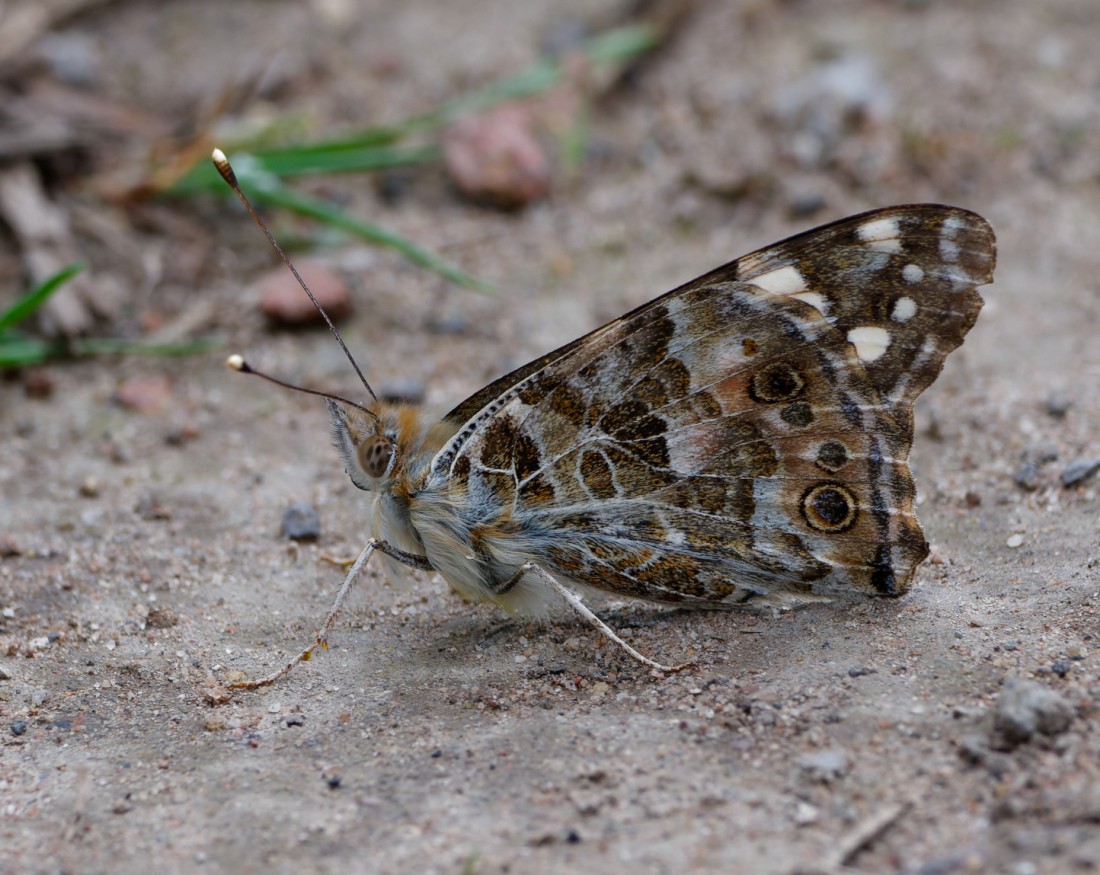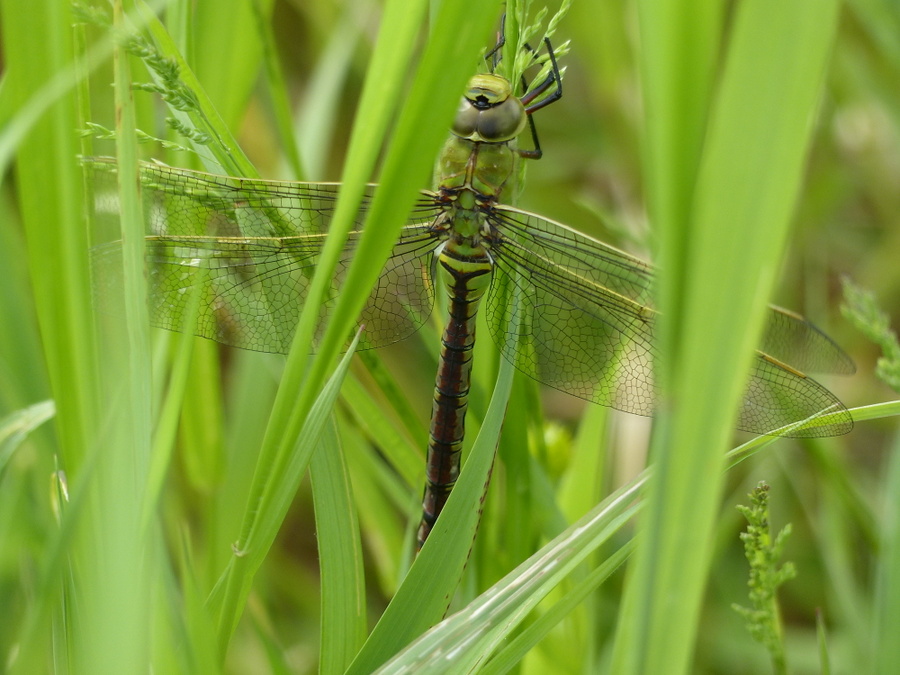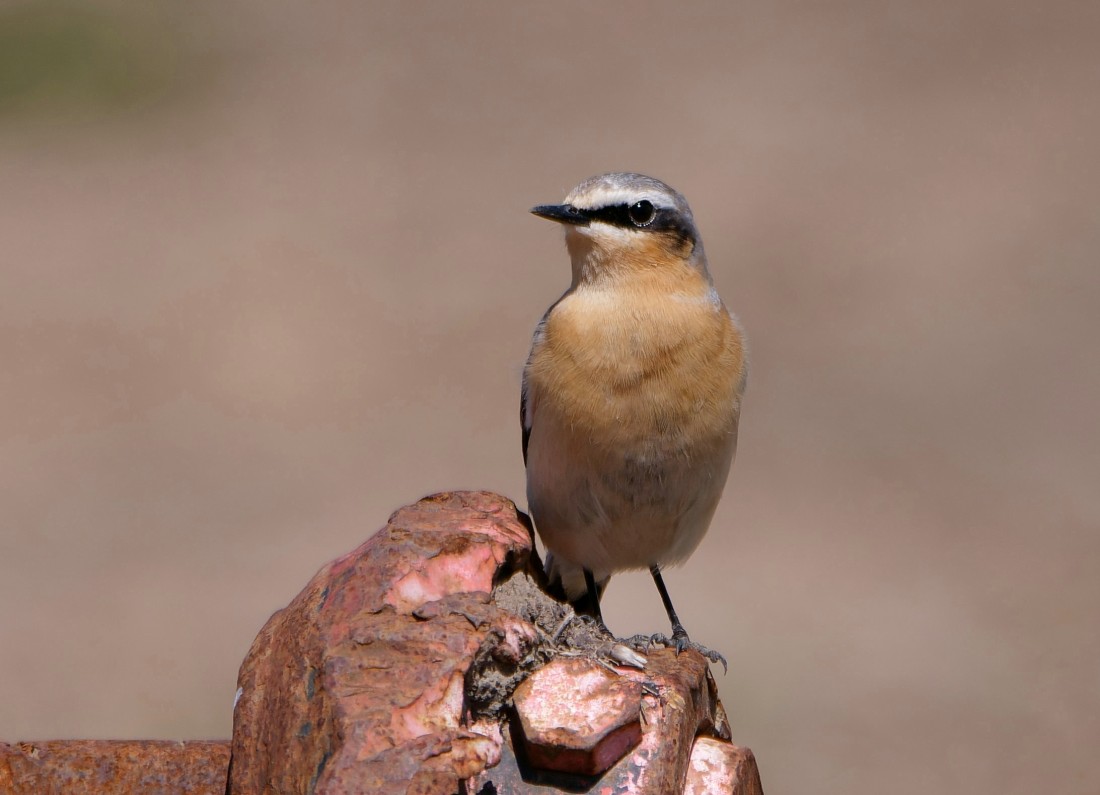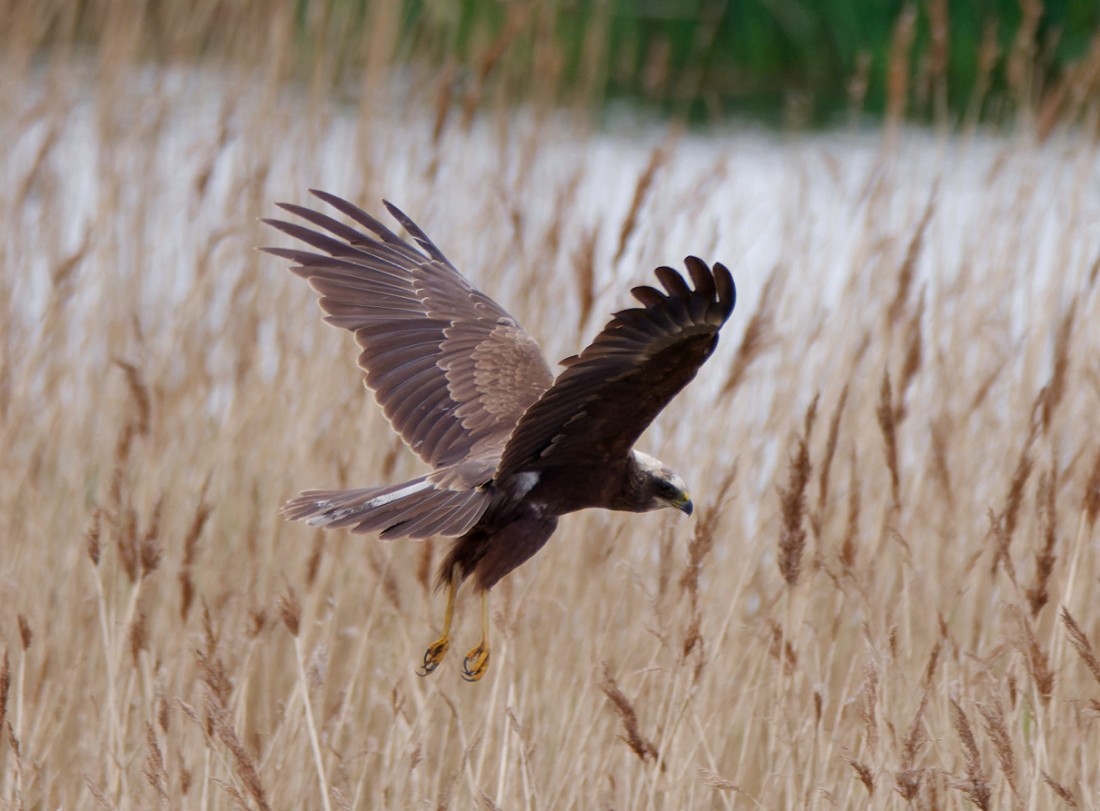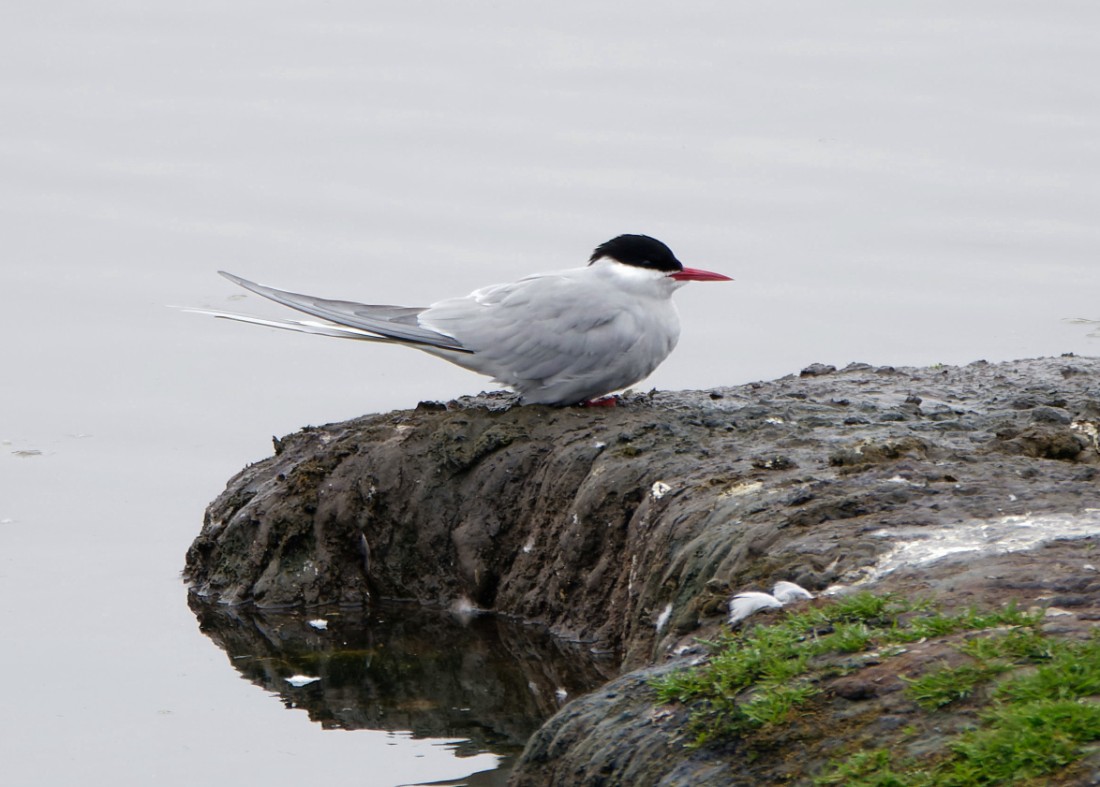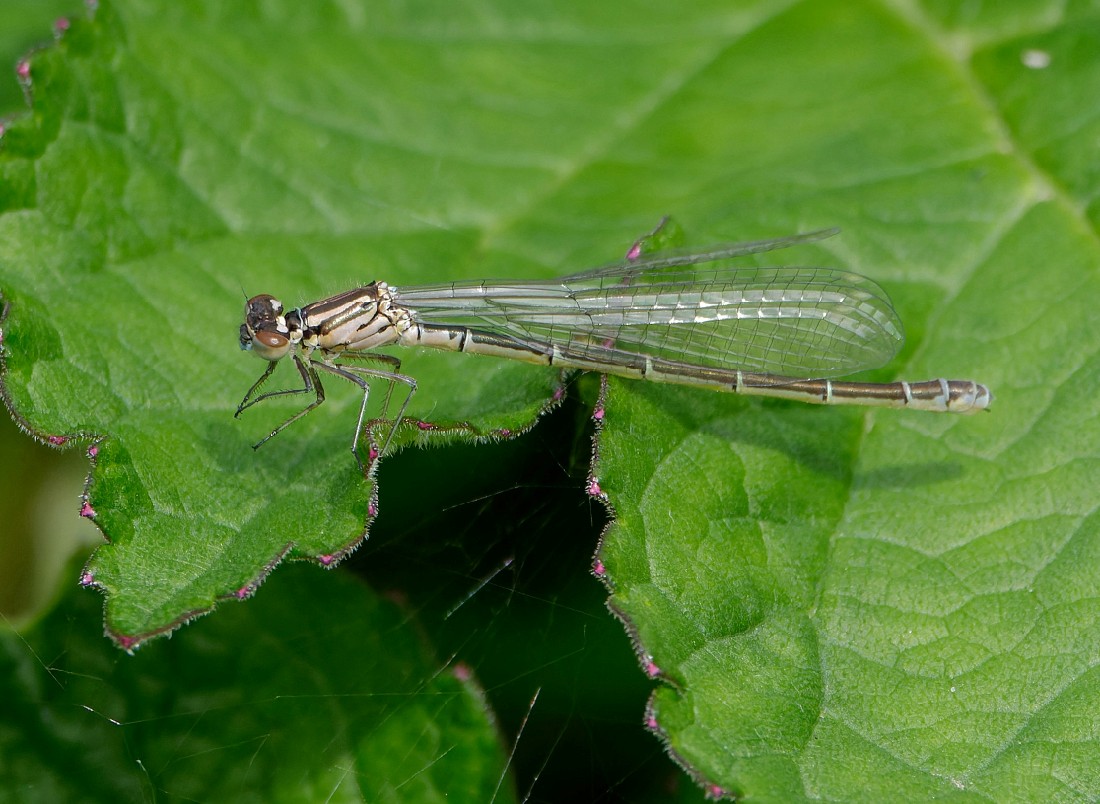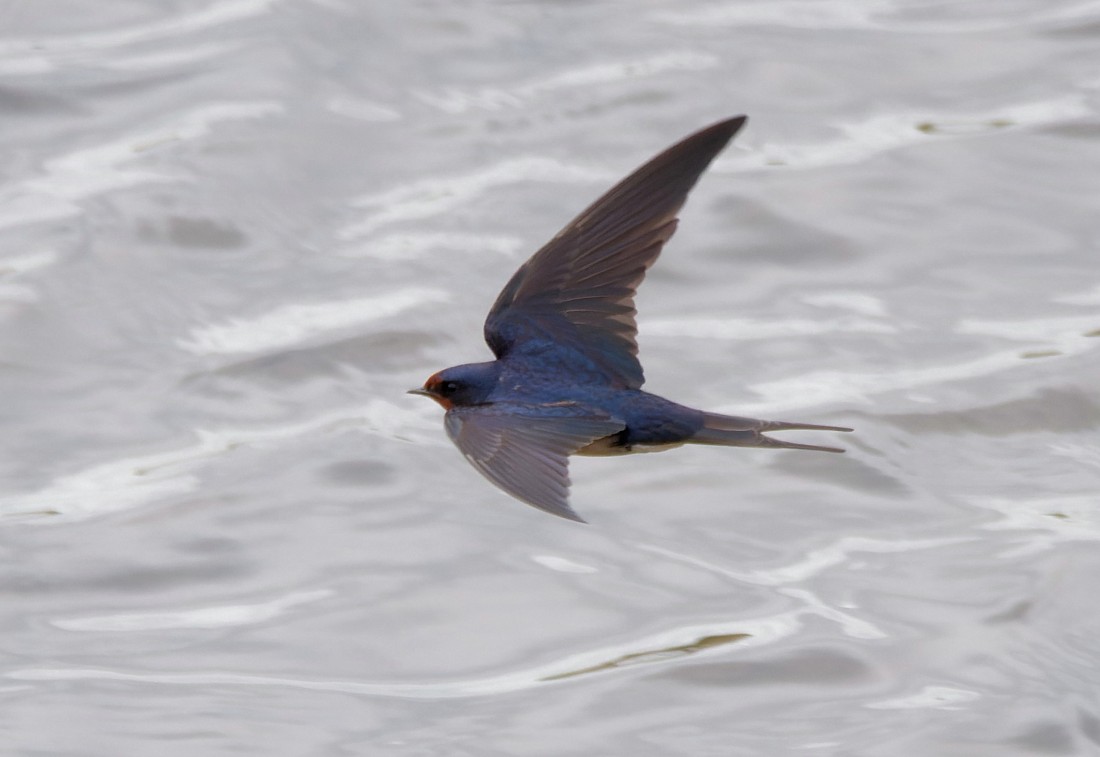Woolston Eyes Monthly Sightings
2022-05-27
This link is to a two-minute video showing: Dunlin, Ringed Plovers, Sanderling, Fox, Greenland Wheatear, Whitethroat, mating Picture-winged Flies, a Lesser Black-backed Gull predating a Black-headed Gull chick, a glimpse of a Hobby, a pair of Wigeon and two pairs of Black-necked Grebes feeding young.
CLICK HERE…. to watch David’s video or cut and paste the following link into your browser https://youtu.be/SUgfp1rVJqQ Cheers David
Submitted by: David Bowman
2022-05-26
Before we got started on trying to count the number of broods on No.3 bed, we had a warbler survey of the bed to complete. At this time of year a lot of the early-arriving warblers have stopped singing, as they are well on with breeding but others, like Reed Warbler are still in full voice. Despite the coolish conditions and light drizzle we managed to locate the following in song: 34 Reed Warblers, 19 Chiffchaffs, 21 Blackcaps, 5 Cetti’s Warblers, 3 Whitethroats, 2 Sedge Warblers and 1 Willow Warbler. Interestingly, research indicates that, for Reed Warblers, the actual breeding population is usually around double the number of singing males counted, giving us an estimated population of 60-70 pairs. Then it was on to scanning for broods and by late morning we’d managed to find 15 pairs of Black-necked Grebe, feeding at least 30 young, which is more than we’ve had for quite a few years, Pochard, too, are doing well with five broods already and plenty of time for more to come. Photo of a Painted Lady from No.4 bed Cheers David Bowman (with Daniel Owen)
Submitted by: David Bowman
2022-05-24
With the focus on breeding birds at Woolston this morning, we started with a warbler survey of No.2 bed, finding 1 Garden Warbler, 2 Cetti’s Warblers, 5 Whitethroats, 8 Willow Warblers, 16 Chiffchaffs and 19 Blackcaps. Then it was an intensive four hours of scanning from the various hides in No.3 bed to try and assess the productivity of our Black-necked Grebe breeding population. By the end of the morning we’d found twelve broods with a minimum of 18 young, so its looking like it might be our best year for a good while. In addition, Pochard, which is our other scarce species of breeding wildfowl, produced two more broods, of 8 and 3 in addition to the 6 young seen on Sunday. Other sightings of note included our first young Water Rail of the year, a Hobby scything its way through a feeding flock of 150 Swifts and the now inevitable hunting Marsh Harrier. Photo of a Lesser Black-backed Gull predating a Black-headed Gull chick Cheers David Bowman (with Daniel Owen)
Submitted by: David Bowman
2022-05-21
On No.1 bed this morning there were numerous Azure, Blue-tailed and Common Blue Damselflies around the west pools, as well as a couple of Broad-bodied Chasers and this early female Emperor Dragonfly.
Managed to get a record photo of the Emperor before it flew off.
Submitted by: Brian Baird
2022-05-21
This is the time of year when our focus moves from incoming migrants to the progress of our breeding species, particularly on No.3 bed. The Reserve is one of the two main UK breeding sites for Black-necked Grebes and we always wait with bated breath for the first broods to appear, riding on the backs of the parents. The first were seen earlier this week and it was pleasing, this morning, to find eight pairs actively feeding young, with more, hopefully on the way. Next to follow should be our Pochard, with around15- 20 pairs of this attractive diving duck representing about 3% of the UK breeding population. After completing our counts on No.3 bed we headed to the new wetland on No.4 bed to count the emerging dragonflies, which included: 17 Black-tailed Skimmers, 9 Broad-bodied Chasers, 7 Four-Spotted Chasers, 100s of Blue-tailed Damselflies, 30 Azure Damselflies and 10 Common Blue Damselflies.
Photo close-up of a Black-tailed Skimmer
Cheers David Bowman (with Daniel Owen and Helen Wynn)
Submitted by: David Bowman
2022-05-19
Although the day started overcast and a little cool on No.4, by mid-morning the sun had broken through and it was idyllic. Birds were good, too, with 4 Dunlin flying through, 180 Gadwall roosting one of the islands on the new wetland, a Common Tern carrying a fish which dropped in but then carried on to the west, a passing male Peregrine in wing-moult (possibly the male from our resident pair?) and a Hobby firstly carrying prey and then stooping at a flock of 60 Swifts. Most of the Swifts seemed to be from the local, Westy breeding population as there was little sign of any passage and several pairs were mating on the wing, with the rest in courtship chases. In the heat of the day we transferred our attentions to smaller stuff, photographing some of the insects and dragonflies which were appearing. Our first Black-tailed Skimmer of the year appeared alongside scores of Blue-tailed, Azure and Common Blue Damselflies. Our first Painted Lady of the year was the pick of the butterflies, alongside plenty of Orange Tips. Bees, hoverflies, beetles and other insects were everywhere and it is the insect richness of all four beds is one of the factors which makes the Reserve such an exceptional place for breeding birds. Photo of a Black-tailed Skimmer Cheers David Bowman (with Daniel Owen)
Submitted by: David Bowman
2022-05-17
It’s the best of both possible world these days, with No.3 bed packed with breeding birds and the more open expanses of the No.4 bed wetland proving highly attractive to a wide variety of passage birds. We started early on No.4 bed, where Daniel Owen picked out a male Mandarin, which slid out of sight just before I arrived. Four Dunlin then flew through and its so pleasing to be seeing these fine little waders on a daily basis. A Hobby was then carrying prey to west of the bed and may have been a male heading off to courtship-feed a female. Hopefully it won’t be too long before Hobbies are breeding on the Reserve. I then had to leave for a while, to meet colleagues from Peel Ports to discuss future plans for the Reserve, seeing a smart Greenland Wheatear on the way, and when I got back Dan was watching a nice, 3rd calendar-year Yellow-legged Gull alongside the other large gulls on one of the islands. These large gulls breed in southern Europe but are slowly spreading northwards and thus becoming more regular in the UK, though still very uncommon on the Reserve. We finished the morning showing our visitors from Peel Ports around No.3 bed, where the first four pairs of Black-necked Grebe were feeding young and both Hobby and Marsh Harriers put in an appearance. Photo of 3 Oystercatchers from No.4 Cheers David Bowman
Submitted by: David Bowman
2022-05-14
With the sun beating down for the first really warm day of the spring, it was another excellent morning for passage. Scanning over the No.4 bed wetland started to pay dividends right from the start, with a couple of Dunlin and the highlight of the day, a single Sanderling which dropped in to feed. Sanderlings breed in the high arctic, are very scarce on migration at inland sites and less than annual on the Reserve. Waders were again to the forefront with, by the end of the morning: 1 Sanderling, 3 Common Sandpipers, 5 Little Ringed Plovers, 5 Ringed Plovers (including 3 of the small dark Scandinavian tundrae subspecies) and 2 Oystercatchers. Other notable sightings included 1 Hobby, 4 Common Terns, 3 “Greenland” Wheatears, 220 Swifts and small numbers of all three hirundines. We finished in early afternoon with a quick dragonfly survey of the small pools in the Eastern Cell, finding 15 Broad-bodied Chasers, 3 Azure Damselflies and 2 Blue-tailed Damselflies. Photo of a Greenland Wheatear Cheers David Bowman (with Daniel Owen, Helen Wynn, Dave Steel, Brian Baird and Brian Martin)
Submitted by: David Bowman
2022-05-12
Spring migration this year has been characterised, so far, more by variety than by volume. With a cool westerly wind and a heavy overcast this morning it didn’t promise anything different but life is full of surprises. We started on No.4 bed, where a couple of Dunlin were feeding alongside a Common Sandpiper and a few Swifts were drifting past at eye level. Then a Common Tern flew through and a Hobby went speeding past. A good start then got even better when a flock of 17 waders came skimming over the lagoon, proving to be 15 Dunlin and 2 Ringed Plovers. By the end of a morning of exceptional passage our totals included: 1 Common Tern, 34 Dunlin, 5 Ringed Plovers , 4 Little Ringed Plovers, 2 Common Sandpipers, 4 Oystercatchers, 2 Hobbies, 450 Swifts, 200 House Martins, 150 Sand Martins and 100 Swallows. When we first thought about constructing the new wetland on No.4 bed we were hopeful that we’d see a return to something like the heyday of the 1980s, when the bed regularly held large numbers of passage waders, so it was exciting to see the bed starting to deliver. Photo of one of the Swifts Cheers David Bowman (with Daniel Owen)
Submitted by: David Bowman
2022-05-10
Sunshine, a freshening south-westerly and scudding clouds made for some spectacular skies this morning. Though conditions weren’t ideal for bringing down passing migrants, there were still odds and ends to be found. On No.4 bed two Wheatears were probably heading for breeding grounds on Greenland or Iceland at this late date. A single Common Sandpiper dropped onto the shingle island in front of the Morgan Hide on No.3 bed, where nine Black-headed Gulls were sitting tightly on clutches of eggs - we later counted 120 such nests, just from that hide and the South Screen. While just small numbers of Swallows and House Martins passed through, Swifts were more in evidence, with 52 counted. Of these, 36 were soaring to the west of No.4 bed and may well have been from the population which breeds on the Westy housing estate. Raptors, as ever, were very active, given the volume of potential prey, with highlights of a high-speed pass by a Hobby and two hunting Marsh Harriers. A count of 120 Gadwall included many moulting males. Photo of a 2nd calendar-year male Marsh Harrier Cheers David Bowman (with Daniel Owen)
Submitted by: David Bowman
2022-05-07
Early May is always good for tern movements, so it was good to see 5 Common Terns moving along the Ship Canal, 3 of which flew onto the new No.4 bed wetland. One was carrying a small fish, which can be a prelude to courtship feeding and nesting and it would be exciting to one day add this species to our breeding list. Waders included Ringed Plovers, Little Ringed Plovers, Snipe and Oystercatcher, while overhead Swift numbers totalled 21 by the end of the morning. Plenty of raptors were on the wing, too with highlights of a Marsh Harrier being mobbed by a Hobby and one of the resident Peregrine pair standing guard at the nest site. The warm weather saw a slight increase in emerging damselflies, with 11 Azures noted around the many small pools across the Reserve. Photo of an Arctic Tern from Thursday Cheers David (with Dan Owen, Helen Wynn, Brian Baird and Sue Haddock)
Submitted by: David Bowman
2022-05-05
A beautiful, warm spring morning at Woolston Eyes, with plenty of buttterflies, our first dragonflies and a trickle of passage. Seven species of wader included Dunlin, Common Sandpipers, Little Ringed Plovers, Ringed Plovers and Snipe. Overhead, the passage of aerial-feeders was light, with just 8 Swifts, 35 Sand Martins, 11 House Martins and 17 Swallows. Raptors included a Hobby which skimmed in at ground level on No.4 bed and a displaying pair of immature Marsh Harriers over No.3 bed. While Yellow Wagtails used to be hard to find on the Reserve, the open ground of the new wetland on No.4 bed is more to their liking and they are now a daily sighting, with another one today. Butterflies included Holly Blue, Brimstone, lots of Orange-tips, Speckled Woods, Peacocks, Small Tortoiseshells and Green-veined Whites. The warmth brought out a few dragonflies including Azure Damselflies. Altogether, a really pleasant day. Photo of an Azure Damselfly Cheers David Bowman (with Daniel Owen)
Submitted by: David Bowman
2022-05-03
Arctic Terns have been moving through the north-west in numbers over the past day or so and it was pleasing to see 9 pass over, including one which dropped onto the Morgan Hide scrape for an hour or so. A male Cuckoo flew past the Morgan Hide window early on, before calling from adjacent trees and two 3rd calendar year Mediterranean Gulls were among the hundreds of squabbling Black-headed Gulls. Hundreds of hirundines were feeding over both beds and attracted the attention of a hunting Hobby. Among the cloud of aerial feeders were 5 Swifts over No.4 bed, which also attracted a bathing Whimbrel, 2 Yellow Wagtails and a passing Dunlin. Photo of a Swallow Cheers David (with Dan Owen)
Submitted by: David Bowman

